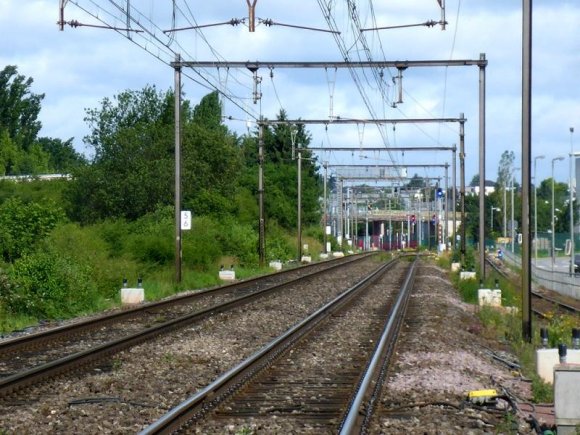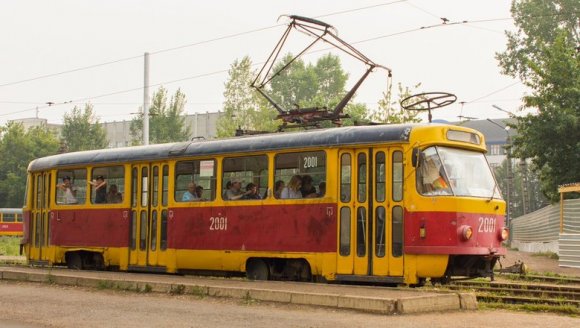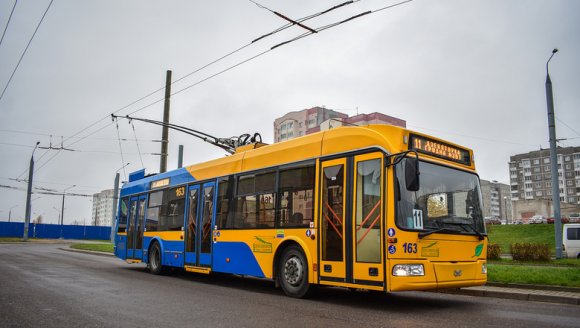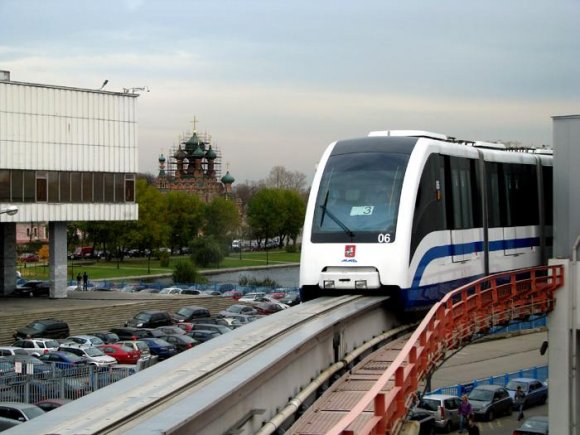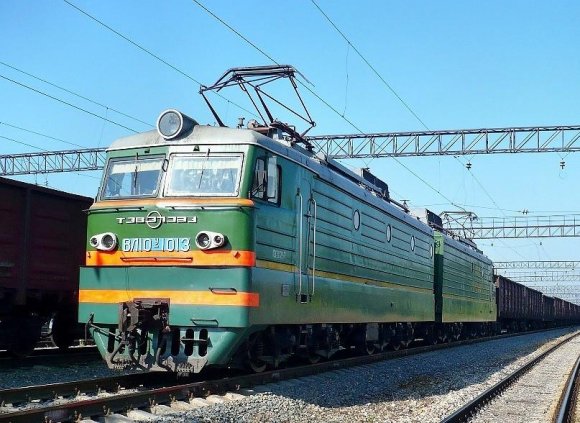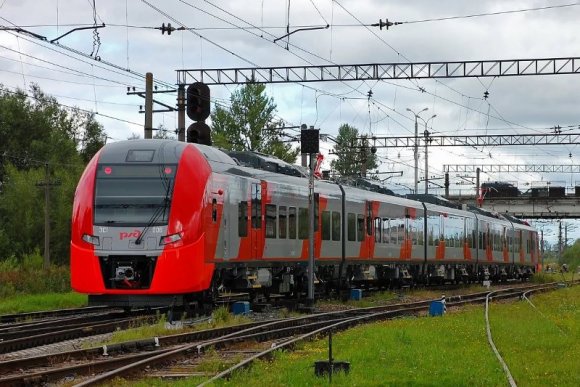How does urban and interurban electric transport get energy?
Urban and intercity electric transport have become familiar attributes of everyday life for modern man. We have long since stopped thinking about how this transport gets its food. Everyone knows that cars are filled with gasoline, bicycles are pedaled by cyclists. But how are electric types of passenger transport fed: trams, trolleybuses, monorail trains, subways, electric trains, electric locomotives? Where and how is the driving energy supplied to them? Let's talk about it.
Tram
In the old days, each new tram economy was forced to have its own power station, as public power grids were not yet sufficiently developed. In the 21st century, power for the tram network is supplied from general purpose networks.
Power is provided by relatively low-voltage direct current (550 V), which would simply be uneconomical for long-distance transmission.For this reason, traction substations are located close to the tram lines, where the alternating current from the high-voltage network is converted into direct current (with a voltage of 600 V) for the tram contact network. In cities where both trams and trolleybuses operate, these modes of transport generally have an overall energy saving.
On the territory of the former Soviet Union, there are two schemes for powering overhead lines for trams and trolleybuses: centralized and decentralized. First came the centralized one. In it, large traction substations equipped with several converting units served all neighboring lines or lines located at a distance of up to 2 kilometers from them. Substations of this type are today located in areas with a high density of tram (trolley) routes.
The decentralized system began to form after the 60s, when tram lines, trolleybuses, subways began to appear, for example, from the city center along the highway, to a remote area of the city, etc.
Here, low-power traction substations with one or two converter units capable of supplying a maximum of two sections of the line are installed every 1-2 kilometers of the line, each end section being able to be supplied by an adjacent substation.
Thus, energy losses are smaller, as the power sections are shorter. Also, if a fault occurs at one of the substations, the line section will remain energized from the neighboring substation.
The contact of the tram with the DC line is through a pantograph on the roof of its car. This can be a pantograph, semi-pantograph, bar or arc. The overhead wire of the tram line is usually easier to hang than the rail.If a boom is used, the air switches are arranged like trolley booms. The flow of current is usually through the rails to ground.
Trolleybus
In a trolley bus, the contact network is divided by section insulators into isolated segments, each of which is connected to the traction substation by means of feeder lines (overhead or underground). This easily allows individual sections to be switched off for repair in the event of a fault. If a fault occurs with the supply cable, it is possible to install jumpers on the insulators to feed the affected section from the adjacent one (but this is an abnormal mode associated with the risk of power supply overload).
The traction substation reduces the high-voltage alternating current from 6 to 10 kV and converts it to direct current with a voltage of 600 volts. The voltage drop at any point of the network, according to the standards, should not be more than 15%.
The contact network of the trolley bus differs from that of the tram. Here it is two-wire, the ground is not used to drain current, so this network is more complex. The conductors are located at a small distance from each other, which is why particularly careful protection against approaching and short-circuiting is required, as well as insulation at the intersections of trolleybus networks with each other and with tram networks.
Therefore, special means are installed at intersections, as well as arrows at the junction points. In addition, some adjustable voltage is maintained, which prevents the wires from overlapping in the wind. That's why rods are used to power trolleybuses — other devices simply won't allow all these requirements to be met.
Trolleybus booms are sensitive to the quality of the catenary, as any defect in it can lead to boom jump. There are norms according to which the breaking angle at the point of attachment of the rod should not be more than 4 °, and when turning at an angle of more than 12 °, curved holders are installed. The sliding shoe runs on the wire and cannot be rotated with the trolley, so arrows are needed here.
Single-track
Monorail trains have recently been operating in many cities around the world: Las Vegas, Moscow, Toronto, etc. They can be found in amusement parks, zoos, monorails are used for local sightseeing and, of course, for urban and suburban communications.
The wheels of such trains are not cast iron at all, but cast iron. The wheels simply guide the monorail train along a concrete girder—the rails on which the track and lines (the contact rail) of the power supply are located.
Some monorails are designed in such a way that they are placed on top of a rail, similar to how a person sits on top of a horse. Some monorails are suspended from a beam below, resembling a giant lantern on a pole. Of course, monorails are more compact than conventional railways, but they are more expensive to build.
Some monorails have not only wheels, but also additional support based on a magnetic field. The Moscow monorail, for example, runs precisely on a magnetic cushion created by electromagnets. Electromagnets are in the rolling stock, and there are permanent magnets in the canvas of the guiding beam.
Depending on the direction of the current in the electromagnets of the moving part, the monorail train moves forward or backward according to the principle of repulsion of the magnetic poles of the same name - this is how the linear electric motor works.
In addition to the rubber wheels, the monorail train also has a contact rail consisting of three current-carrying elements: plus, minus and ground. The supply voltage of the monorail linear motor is constant, equal to 600 volts.
Underground
Electric subway trains receive their electricity from the direct current network — as a rule, from the third (contact) rail, the voltage of which is 750-900 volts. Direct current is obtained in substations from alternating current using rectifiers.
The contact of the train with the contact rail is made through a movable current collector. The contact bus is located to the right of the tracks. The current collector (the so-called «Pantograph») is located on the bogie of the carriage and is pressed against the contact bus from below. The plus is on the contact rail, the minus is on the train tracks.
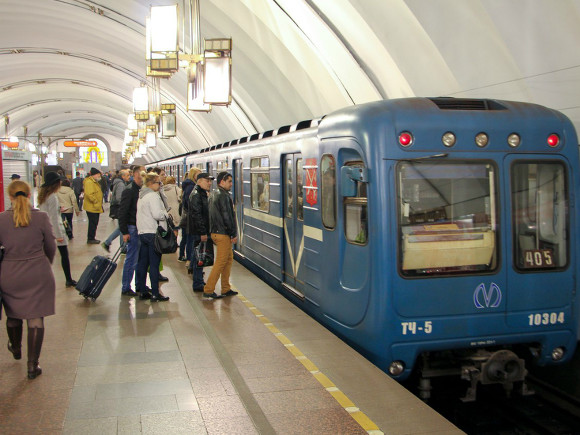
In addition to the power current, a weak "signal" current flows along the track rails, which is necessary for the blocking and automatic switching of traffic lights. The tracks also transmit information to the driver's cabin about the traffic signals and the permitted speed of the subway train in that section.
Electric locomotive
An electric locomotive is a locomotive powered by a traction motor. The engine of the electric locomotive receives power from the traction substation through the contact network.
The electrical part of an electric locomotive generally contains not only traction motors, but also voltage converters, as well as devices that connect motors to the network, etc. The current equipment of an electric locomotive is located on the roof or on its covers and is designed to connect the electrical equipment to the contact network.
The collection of current from the overhead line is provided by pantographs on the roof, after which the current is fed through the busbars and bushings to the electrical devices. On the roof of the electric locomotive there are also switching devices: air switches, switches for current types and disconnectors for disconnecting from the network in case of pantograph malfunction. Through the buses, the current is fed to the main input, to the converting and regulating devices, to the traction motors and other machines, then to the wheel pieces and through them to the rails, to the ground.
Regulation of the traction effort and speed of the electric locomotive is achieved by changing the voltage in the armature of the motor and by changing the excitation coefficient of collector motors or by adjusting the frequency and voltage of the supply current of asynchronous motors.
Voltage regulation is done in several ways. Initially, on a direct current electric locomotive, all its motors are connected in series, and the voltage of one motor on an eight-axle electric locomotive is 375 V, with a catenary voltage of 3 kV.
Groups of traction motors can be switched from series connection — to series-parallel (2 groups of 4 motors connected in series, then the voltage for each motor is 750 V), or to parallel (4 groups of 2 motors connected in series, then this voltage for one motor — 1500 V). And to obtain intermediate voltages of the motors, groups of rheostats are added to the circuit, which makes it possible to adjust the voltage in steps of 40-60 V, although this leads to the loss of some of the electricity on the rheostats in the form of heat.
Power converters inside the electric locomotive are necessary to change the type of current and lower the catenary voltage to the required values that meet the requirements of traction motors, auxiliary machines and other circuits of the electric locomotive. The conversion is done directly on board.
On AC electric locomotives, a traction transformer is provided to reduce the input high voltage, as well as a rectifier and smoothing reactors to obtain DC from AC. Static voltage and current converters can be installed to power auxiliary machines. On electric locomotives with asynchronous drive of both types of current, traction inverters are used, which convert direct current into alternating current with regulated voltage and frequency, which is fed to traction motors.
Electric train
An electric train or electric train in the classical form receives electricity with the help of pantographs through a contact wire or contact rail.Unlike an electric locomotive, the collectors of electric trains are located both on motor cars and on trailers.
If the current is supplied to the towed cars, then the car is powered through special cables. The current collector is usually on top, from the contact wire, it is carried out by collectors in the form of pantographs (similar to tram lines).
Usually, the current collection is single-phase, but there is also a three-phase one, when the electric train uses pantographs of a special design for separate contact with several wires or contact rails (when it comes to the subway).
The electrical equipment of the electric train depends on the type of current (there is direct current, alternating current or two-system electric trains), the type of traction motors (collector or asynchronous), the presence or absence of electric braking.
In principle, the electrical equipment of electric trains is similar to the electrical equipment of electric locomotives. However, in most electric train models, it is placed under the body and on the roofs of the cars to increase the passenger space inside. The principles of driving electric train engines are roughly the same as electric locomotives.

